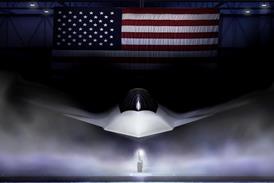Julian Moxon/Paris
Development of a 1t launcher, increased capability for the Ariane 5 rocket and a new emphasis on partnership with industry for telecommunications and science programmes are among initiatives planned by the European Space Agency (ESA) in its latest five-year plan.
ESA's new director general, Antonio Rodota, who has succeeded Jean-Marie Luton, will present the plan to European space ministers in June, when the agency will request around ECU2.5 billion ($2.7 million) for projects planned between 1999 and 2003.
Major emphasis is being placed on keeping the European launchers industry competitive, the development of a small launcher being seen by ESA as necessary "-to complete the range of European launch capabilities". The proposed Vega launcher would have a 1,000kg payload capability (from Kourou, French Guiana) for launches into a 700km polar orbit. The first of three stages would be based on the Ariane 5 solid booster, the second and third from the Italian Zefiro rocket.
Further up the scale, ESA says "-all market surveys confirm that the mass of telecommunications satellites will continue to increase", reaching an average of around 5.5t by 2006. It points out that new markets have emerged for constellations of satellites, which will require a re-ignitable upper stage to enable orbital manoeuvring.
ESA says the Ariane 5 evolution should be developed to provide an 11t geostationary transfer orbit capability by 2003, using a new cryogenic re-ignitable upper stage. Initially, the launcher would be equipped with a re-ignitable version of the storable propellant upper stage to give it a 9t GTO capability by 2001 (Flight International, 11-17 March).
In its "Vision 2005" programme ESA proposes a partnership with industry "-to ensure the long term future of the European satellite industry". The plan foresees a new generation of systems and services to provide global high speed communications combining multimedia and mobility.
A second generation global navigation satellite system is also seen as imperative, and ESAreveals that Europe and Russia are likely to sign a co-operation deal in 1998. It recommends development of a pilot system, to be in orbit by 2003, to validate European technologies and provide "the first concrete step towards a European contribution to a global navigation system".
On Earth observation, ESA proposes Earth Explorer, for research into areas such as new observing technology, and Earth Watch, for the applications market.
Source: Flight International























